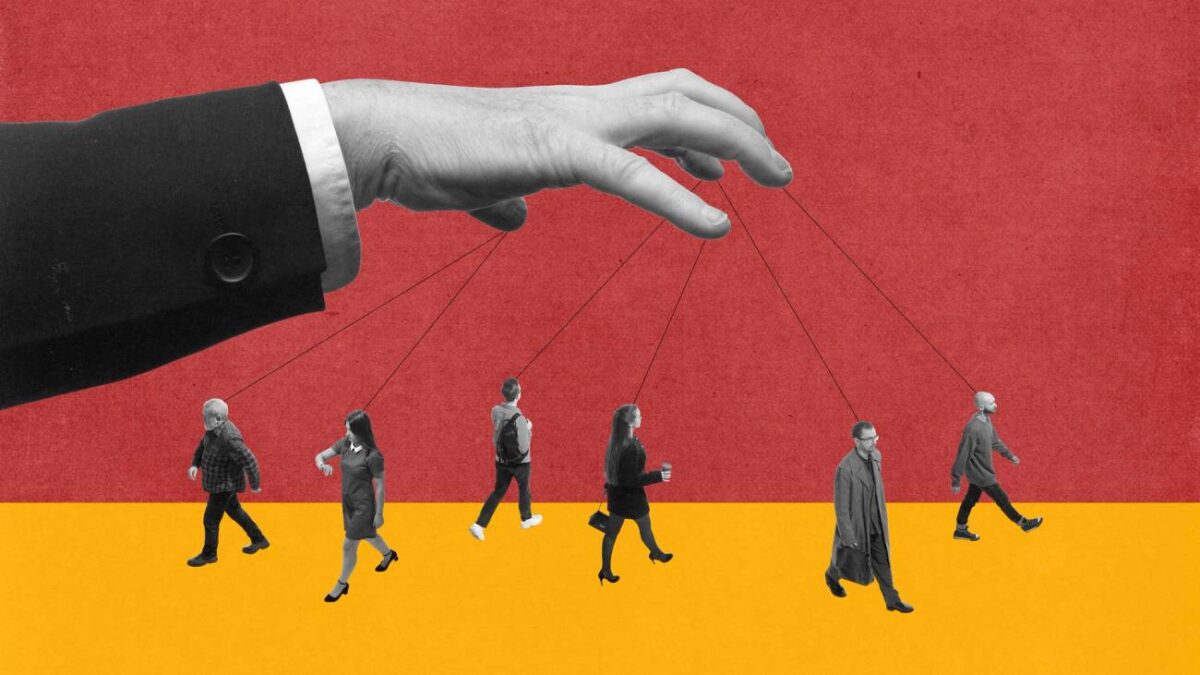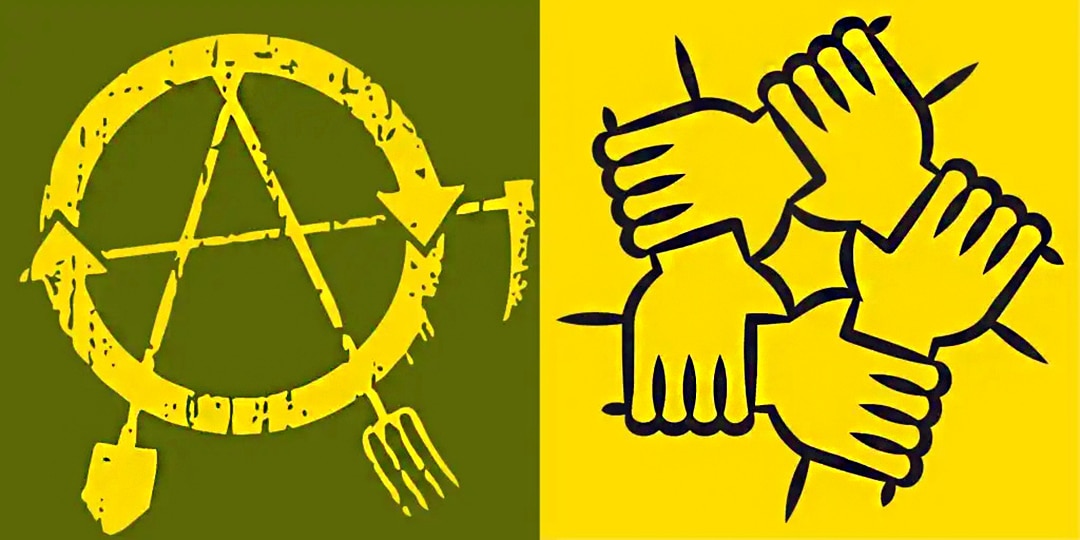

Learn This Term: ‘Whole of Society’
by Jacob Siegel | Jul 25, 2024
To make sense of today’s form of American politics, it is necessary to understand a key term. It is not found in standard U.S. civics textbooks, but it is central to the new playbook of power: “whole of society.”
The term was popularized roughly a decade ago by the Obama administration, which liked that its bland, technocratic appearance could be used as cover to erect a mechanism for the government to control public life that can, at best, be called “Soviet-style.” Here’s the simplest definition: “Individuals, civil society and companies shape interactions in society, and their actions can harm or foster integrity in their communities. A whole-of-society approach asserts that as these actors interact with public officials and play a critical role in setting the public agenda and influencing public decisions, they also have a responsibility to promote public integrity.”
In other words, the government enacts policies and then “enlists” corporations, NGOs and even individual citizens to enforce them—creating a 360-degree police force made up of the companies you do business with, the civic organizations that you think make up your communal safety net, even your neighbors. What this looks like in practice is a small group of powerful people using public-private partnerships to silence the Constitution, censor ideas they don’t like, deny their opponents access to banking, credit, the internet, and other public accommodations in a process of continuous surveillance, constantly threatened cancellation, and social control.
And there’s an additional catch. “The government”—meaning the elected officials visible to the American public who appear to enact the policies that are carried out across the whole of society—is not the ultimate boss. Joe Biden may be the president but, as is now clear, that doesn’t mean he’s in charge of the party.
As a modern political trope, whole of society dates to the Obama administration’s attempt to pivot in the “war on terror” to what it called CVE—countering violent extremism. The idea was that by identifying at-risk individuals and then engaging them, American officials could “get left of the boom” and intervene before extremism led to violence.
In concept, the strategy called for empowering “community-led interventions” as a method of conflict resolution. In practice, the White House paired its progressive efforts at community activism with an aggressive expansion of counterterrorist operations and drone strikes.
‘Whole of society’ is a totalizing form of politics. It discards the traditional separation of powers and demands political participation from corporations, civic groups, and other nonstate actors.
But the true lasting legacy of the CVE model was that it justified mass surveillance of the internet and social media platforms as a means to detect and de-radicalize potential extremists. Inherent in the very concept of the “violent extremist,” was a weaponized vagueness. A decade after 9/11, as Americans wearied of the war on terror, it became passé and politically suspicious to talk about jihadism or Islamic terrorism. Instead, the Obama national security establishment insisted that extremist violence was not the result of particular ideologies and therefore more prevalent in certain cultures than in others, but rather its own free-floating ideological contagion. Given these criticisms Obama could have tried to end the war on terror, but he chose not to. Instead, Obama’s nascent party state turned counterterrorism into a whole-of-society progressive cause by redirecting its instruments—most notably mass surveillance—against American citizens and the domestic extremists supposedly lurking in their midst.
A reflection on the 20-year anniversary of Sept. 11 written in 2021 by Nicholas Rasmussen, the former director of the U.S. National Counterterrorism Center, captures this view. “Particularly with the growing threat to public safety and security posed by domestic violent extremism, it is essential that we move beyond the post-9/11 counterterrorism strategy paradigm that placed the government at the center of most counterterrorism work.” Instead of expecting the government to deal with terrorist threats, Rasmussen advocated for “a much wider, more expansive and inclusive ‘whole-of-society’ approach” that he said should encompass “state and local governments, but also the private sector (to include technology companies), civil society in the form of both individual voices and non-governmental organizations (NGOs), and academia.”
The whole-of-society trope can be traced from its initial popularization in the context of CVE in 2014-15 to its use as a censorship coordinating mechanism after the rise of Donald Trump initiated a panic over Russian disinformation, then as a call for increased social media clampdowns during COVID, to the present—where it functions as a generic slogan and coordinating mechanism of a party state, one originally built by Obama, and which now operates through the vehicle of the Democratic Party over which he presides.
What the various iterations of this whole-of-society approach have in common is their disregard for democratic process and the right to free association, their embrace of social media surveillance, and their repeated failure to deliver results. Indeed even Rasmussen, while advocating the whole-of-society approach, acknowledges that it “promises to be in many ways more messy, more complicated, and more frustrating in terms of delivering outcomes.” In other words, one shouldn’t count on it working.
Not that such flaws are disqualifying. In the same way that a particular politician’s poor standing with voters does not seem to discourage the party from anointing them as long as they can be trusted to serve its interests, the whole-of-society strategy remains attractive regardless of its outcomes, because it extends the party’s authority over formerly independent centers of power.
Indeed, whole of society is a totalizing form of politics. As the name implies, it discards the traditional separation of powers and demands political participation from corporations, civic groups, and other nonstate actors. Mass surveillance is the backbone of the approach, but it also consolidates a new class of functionaries who all directly or indirectly work for the party’s interests. This is exactly how the party carried out its mass censorship during COVID and the 2020 election: by embedding government officials and party-aligned “experts” from the for-hire world of nonprofit activism, inside the social media platforms. The result, as I chronicled in an investigative essay last year, was the largest campaign of domestic mass surveillance and censorship in American history—often censoring true and time-sensitive information.
To avoid the appearance of totalitarian overreach in such efforts, the party requires an endless supply of causes—emergencies that party officers, with funding from the state, use as pretexts to demand ideological alignment across public and private sector institutions. These causes come in roughly two forms: the urgent existential crisis (examples include COVID and the much-hyped threat of Russian disinformation); and victim groups supposedly in need of the party’s protection.
This past month included one of each.
Many observers misunderstood the downfall of Joe Biden and his swift replacement by Vice President Kamala Harris. Seeing the switch made without voter participation they decried it as a coup. But that is a kind of category error that assumes an intact democratic process was subverted by outside forces. In reality, if Biden is still aware of anything, it is that the party-state system that just removed him from power is the same one that installed him in the first place.
Rather than a coup, Biden’s precipitous decline forced into public view a political maneuver that would ordinarily have been carried out behind closed doors. Nevertheless it was an orderly transfer of power with party bosses Barack Obama and Nancy Pelosi firmly in control of the process. Try to imagine the GOP attempting a similar replacement of Donald Trump and see how quickly your mind fills with images of mass protests and open revolt by Trump supporters. Only the Democratic Party establishment could pull off such a move months before the election. How?
Because the Democrats have at their disposal that whole-of-society political machinery, which this week was operationalized in service of a new cause: getting Harris elected in order to prevent the crisis of Russian-fascist-white supremacist-democracy-killing barbarism that is Trump. This explains why prominent media outlets pivoted in unison to insist that Harris was never the White House border czar, despite their own coverage from 2021 referring to her as “border czar.” One such article in Axios blamed the Trump campaign and Republicans for falsely tagging Harris with the border czar title which the article alleged “she never actually had.” Hours later the article was forced to post an Orwellian correction stating that “Axios was among the news outlets that incorrectly labeled Harris a “border czar” in 2021.”
This is absolutely devastating and shows in just over a minute why trust in the media is at an all time low – they just relentlessly gaslight and lie whenever it suits their political needspic.twitter.com/ta6bMntFGo
— Ian Miller (@ianmSC) July 25, 2024
The tell here—the way you know the system today functions very differently from the one that you, if you’re over the age of 30, grew up with—is how fast things change, on a dime. “How Kamala Harris Took Command of the Democratic Party in 48 Hours,” The New York Times breathlessly panted yesterday morning. It is hopeful to imagine that it was Harris’ extraordinary grit and leadership, largely hidden until now, that enabled her to “take over the party” so swiftly, but the truth is less dramatic. The party was delivered to her because she was selected by its leaders to act as its figurehead. That real achievement belongs not to Harris, but to the party-state. The question you might have is how it managed to put up a new candidate for president in just a matter of weeks. The answer is that the party had repeated opportunities over the past 10 years to train its whole-of-society apparatus in the rapid coordination of mass events. This was the payoff.
The other “great cause” this month arrived on July 19, when Vice President Harris’ husband, Doug Emhoff, introduced a proposal for new “anti-hate” legislation. After holding an “interfaith coalition building” meeting at the White House, Emhoff announced that the Biden administration would soon release a new plan for combating Islamophobia. The plan comes out of the same White House initiative launched last year to counter antisemitism that promised a whole-of-society effort including increased scrutiny of social media companies and calls to counter “disinformation and misinformation.”
Herding Jews into the whole-of-society embrace is a useful way to turn nominally Jewish institutions—which here includes the Anti-Defamation League, which advised and endorsed the administration’s whole-of-society national strategy—into controlled subsidiaries of the party, while wresting control over the “Jewish narrative.” Thus the constant need to invoke Islamophobia every time evidence of antisemitism is presented. By erasing Jewish particularity and conflating all kinds of bigotry in an indistinguishable beige of generic “hate,” the party shuts up demands that it actually do something about anti-Jewish violence—something that only racist Islamophobes see as a specifically Jewish issue. At the same time it justifies expansive, blunt-force interventions into institutions across the entire society, since they are all supposedly equally susceptible to promoting hate and extremism if they are allowed to operate outside of the party-state’s surveillance apparatus.
Over and over again, the answer to the generic category of hate is increased regulation and censorship of social media. Under the auspices of coordinating between the corporate and civic sector, activist groups aligned with party interests are used to monitor powerful corporations, especially in the tech sector. Protecting Jews from hate, in other words, demands granting the party-state more power to reward allies and punish political opponents.
That is precisely why Tablet’s editors have warned American Jews to oppose laws and other political initiatives claiming to protect them from antisemitism by censoring hate speech. “In a world in which people with minority opinions are increasingly subject to the full force of ‘the whole of government’ or ‘the whole of society’ being brought against them by a narrow group of powerful people,” Tablet wrote, “we have an existential interest as a people in supporting free speech and constitutional rights for others—on the historically sound principle that they will soon be coming for us.”
One can imagine a President Kamala Harris using the whole-of-society push to enact various equity initiatives, which she has championed in the past. But, equally, if Trump wins in November, the same tactic will be used to coordinate the “spontaneous” resistance movement of government groups, media outlets, and billionaire-funded nonprofits who carry out the functions of the party state. It is this party-state itself that is incompatible with democracy. And the whole of society is what it demands.




